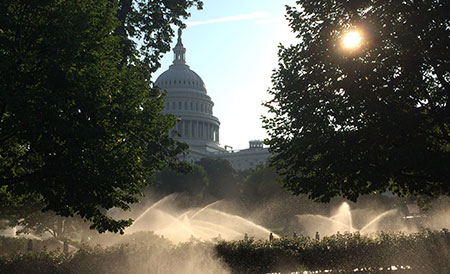
This summer, the landscape contracting industry has faced what may be the tightest labor market in its history. With the economy running at full tilt, the unemployment rate at near all-time lows and a labor market that eschews working outside in an ever-hotter climate, many landscape contractors are making hard decisions about whether they can even stay in business.
Getting work is not the problem
Getting work is not the problem; getting workers to do the work is now the battle.
Take LMS Greenhouse & Nursery in western Pennsylvania. With 10 full-time American workers, company president Richard Cafaro made the decision in June to close the company when he could not get visas for his 10 H-2B Mexican workers for the landscape contracting end of his business.
With the economy booming in western Pennsylvania (yes, western Pennsylvania!), Cafaro was unable to find enough local workers to fulfill the contracts he had for projects this season.
Some hope
In late July, the House Appropriations Committee agreed by voice vote to reinstate the H-2B returning worker provision in the Department of Homeland Security’s (DHS) appropriation bill. This provision could double the number of H-2B visas available to companies needing guest workers, including landscape contractors.
The new provision would:
- Exempt H-2B workers from the 66,000 annual cap if they received any H-2B visas during one of the previous two fiscal years;
- Allocate the 66,000 visas for new H-2B workers on a quarterly basis to assist employers whose seasons do not align well with the current biannual allocation; and
- Create a system in which 66,000 H-2B visas for new workers would be allocated on a proportional basis if the cap is reached, so all employers will receive a percentage of H-2B workers.
Good news, bad news
That’s the good news. The bad news is that, if passed, it would only be in force for the next fiscal year beginning Oct. 1.
And the bill has a long way to go before it is passed by the House and then goes to the Senate for action. Passage must come before Sept. 30 to avoid a government shutdown.
Outlook for passage
The Senate will be the major stumbling block for the returning-worker provision. In June, the Senate Appropriations Committee passed its version of the fiscal year 2019 spending bill without mention of the H-2B returning-worker provision.
Both Republican and Democratic senators are opposed to legislating by the budget process. They contend that programmatic changes, such as the returning-worker provision, be legislated through regular legislative processes, in other words, by introducing a separate bill dealing with that issue.
Timing also an issue
Neither the Senate nor the House has passed its appropriations bills so far. They have until Sept. 30 to do so to avoid a government shutdown. Since it’s an election year, Senators and Congressmen want to spend as much time as possible in their districts campaigning. Days when Congress is in session are relatively few in September.
The Senate Republicans are concerned with confirming Brett Kavanaugh to the Supreme Court before the mid-term election Nov. 6. That effort will take up precious remaining session days in the Senate.
House Republicans are anxious to bring up tax legislation before Nov. 6.
So, the Senate and House calendars are already packed, there are few scheduled session days and the Senate is philosophically opposed to including riders like the H-2B returning-worker provision in any appropriations bill. Expedience to get the appropriations process done before Sept. 30 could mean that the returning-worker provision gets jettisoned.
The wild card
The wild card in all of this is, of course, the president. President Trump wants $25 billion for his wall along the Mexican border. That $25 billion is not in either the House or the Senate appropriations bills. In July, Trump mused that if he doesn’t get his $25 billion border wall a government shutdown might not be a bad thing. What this means is more confusion and political gamesmanship, increasing the likelihood that the returning-worker provision gets dropped from the House bill.
All is not lost
The only hope for getting the returning-worker provision in the final fiscal year 2019 appropriations bill is for each of you to put pressure on your Congressman and Senators to keep it in the final bill.
Both houses are extremely important. Even though the provision is in the House bill, we need to shore up Congressional support to fight for the provision.
We also need to convince the Senate that this provision is essential to keeping our businesses open.
Your Congressmen will be asking for your vote this November. Talk to them in person while they are in the district and tell your story. Also, talk to their opponent.
If one of your Senators is running this year, talk to him or her and the opponent. If they are not running, visit them when they are home in the district. Tell your story.
We have less than 30 days to do this, and the clock is ticking.

